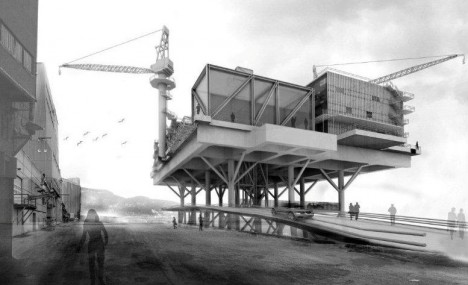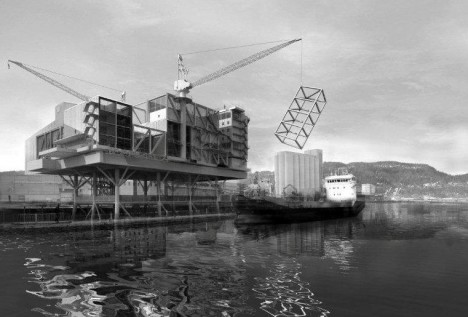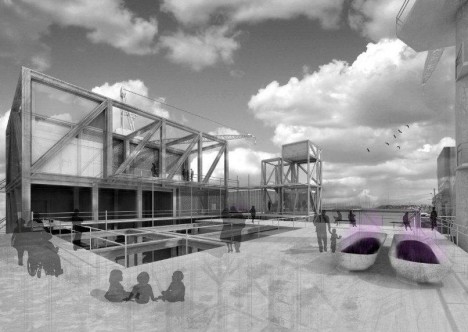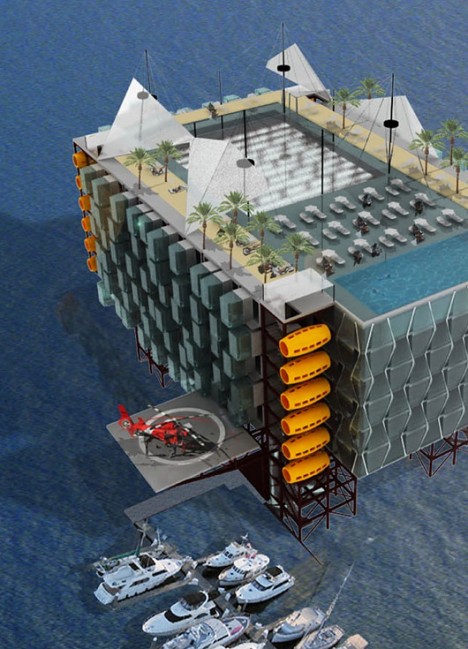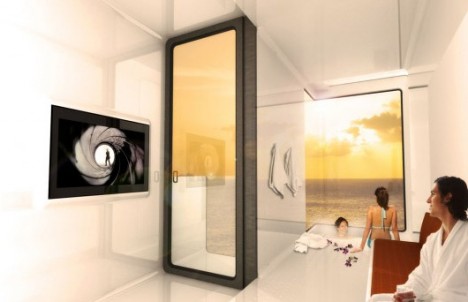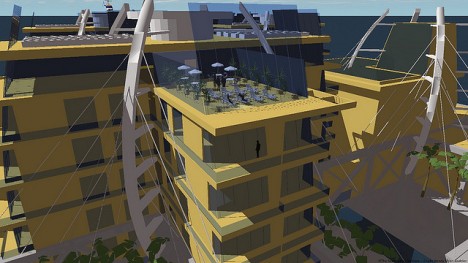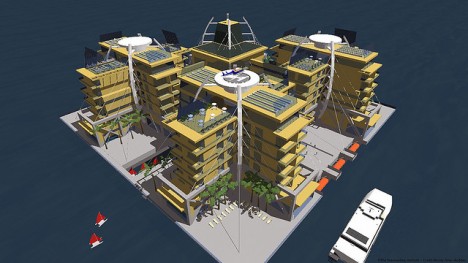Brought to the Shore As Housing
Can a massive retired oil platform help revive a blighted neighborhood in Trondheim, Norway? Architect Sverre Max Stenersen envisions towing an existing platform from the North Sea to the city, remodeling it into apartments and other facilities. Not only would it serve a practical purpose, it would also stand as a visual reminder of where Norwegians’ wealth comes from. The industrial setting is “starving for a new beginning,” says Stenersen, and its location on the water would be ideal for reusing one of the dozen or so platforms in Norway territorial waters waiting to be dismantled.
Oil Rig Hotel by Houston Morris architects
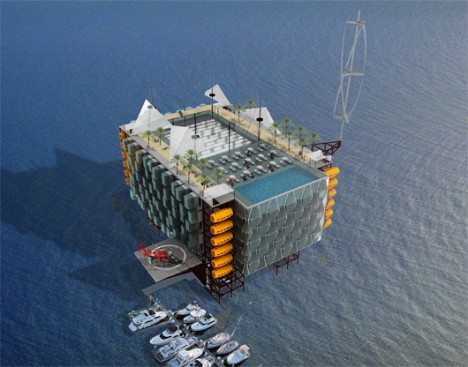
Winner of the 2009 International Hospitality Design award, the Oil Rig Resort, Spa and Aquatic Adventure turns one of the Gulf Coast’s 4,000 oil rigs into an eco-friendly resort for adventurers and luxury travelers, as well as a port-of-call for cruise ships. Functioning autonomously with the use of renewable energy sources, the resort design takes advantage of its unique location with glass floors in the lobby.
ClubStead Autonomous Oceanic Community
The concept of ‘seasteading’ – creating permanent floating dwellings outside territory claimed by the government of any standing nation – is a great fit for oil platforms, and several proposed structures have made use of them (as well as cruising vessels, an anti-aircraft platform and custom-built floating islands.) ‘Clubstead’ by the Seasteading Institute is a 200-guest resort built to withstand the waves off the coast of California, somewhere between 12 and 30 miles from San Diego or Los Angeles. But in this case, the base isn’t exactly an oil rig: it’s a patented design inspired by the platforms, reinforced for added protection against weather events.
